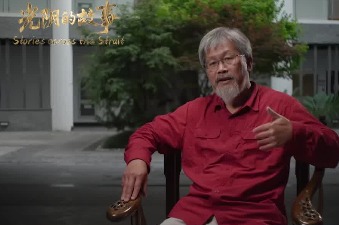End of serfdom in Xizang worth celebrating

Feudal serfdom was a social system established by lords in feudal society to exploit serfs living in their territories. According to French historian Marc Léopold Benjamin Bloch, the defining characteristic of serfdom was its hereditary status, with lords exercising legal authority over serfs, including the judicial power to punish them. This system was marked by personal attachment and land monopoly, a social structure that once prevailed in Xizang.
The democratic reform in Xizang, initiated in 1959, marks a historical milestone, because it dismantled feudal serfdom that had allowed lords to exploit ordinary people for more than 700 years. The reform granted the people in Xizang dignity and rights in line with the broader trend of social development.
Serfs got freedom following the reform in the Xizang autonomous region, enjoying life in a socialist society and participating in the building of a new social order, with their living conditions undergoing a profound transformation. While the mode of production has undergone a radical change, religious beliefs coexist harmoniously today with freedom in Xizang.
The year 1959 was a pivotal turning point in the history of Xizang, as it signaled the end of the oppressive feudal rule in the region and gave a new life to more than 1 million former serfs. The reform is comparable to the emancipation of slaves during the American Civil War, the abolitionist movement in Europe, and the dismantling of the apartheid in South Africa.
The liberation of serfs in Xizang was a historic step taken by the Communist Party of China. Given that many European and American countries began abolishing serfdom and embracing modern social norms and principles from the 14th century, the existence of feudal serfdom in Xizang in the 20th century was a stark affront to humankind.
The CPC was committed to abolishing feudal serfdom in Xizang because it represents the interests of the vast majority of the people. From the abolition of feudal serfdom in 1959 to the high-quality development of Xizang today, and the transformation from a grim feudal system to a prosperous new era on the snowy plateau, they are part of the Party's glorious history.
The CPC's governance policy in Xizang has ensured human rights protection for the people in the region. Aiming for common prosperity, the CPC implemented land reforms by abolishing serfdom, granting millions of serfs freedom and land rights, thereby laying the groundwork for modernization.
However, supported by anti-China forces in the United States-led West, the 14th Dalai Lama clique and certain "Western scholars" have sought to romanticize serfdom in Xizang. The Dalai Lama clique harbors ulterior political motives, while those so-called scholars often ignore the extensive historical records and even the works of Western scholars who conducted social investigations in Xizang. They deliberately glorify the "Era of Shambhala".
The BBC once published a fabricated article distorting the reality of serfdom, absurdly claiming that serfs received lifelong "care" from their masters, enjoyed peaceful sleep and held "iron rice bowl "jobs. Such statements are preposterous. Fortunately, many Western scholars remain clear-eyed. For instance, Canadian scholar Tom Grunfeld, in his book, The Making of Modern Tibet, criticizes the dark realities of Xizang society before 1959.
Humanity shares a collective memory of suffering. In the early 20th century, the US, France and the United Kingdom established museums dedicated to the history of serfdom and slavery and designated days to commemorate their abolition. And the United Nations declared Dec 2 as International Day for the Abolition of Slavery.
Sixteen years ago, on Jan 19, 2009, Xizang designated March 28 as Serf Liberation Day. This year the Chinese people will commemorate the 17th Serf Liberation Day. The monumental change on the snowy plateau symbolizes the historic achievement of the Party in leading the people of all ethnic groups in Xizang to overthrow the feudal serf system and stride toward a bright future. It is a moment worth remembering and honoring.
The views don't necessarily reflect those of China Daily.
The author is a researcher at the Institute of Borderland Studies, the Chinese Academy of Social Sciences.
Today's Top News
- Free trade zones incubators for nationwide policies
- US scholar: China's 15th Five-Year Plan charts path to future
- Coding the law for smart governance
- China ready to take tougher steps over Takaichi remarks
- Mobile judicial teams ensure justice for all
- Historic cross-boundary marathon marks a milestone






























